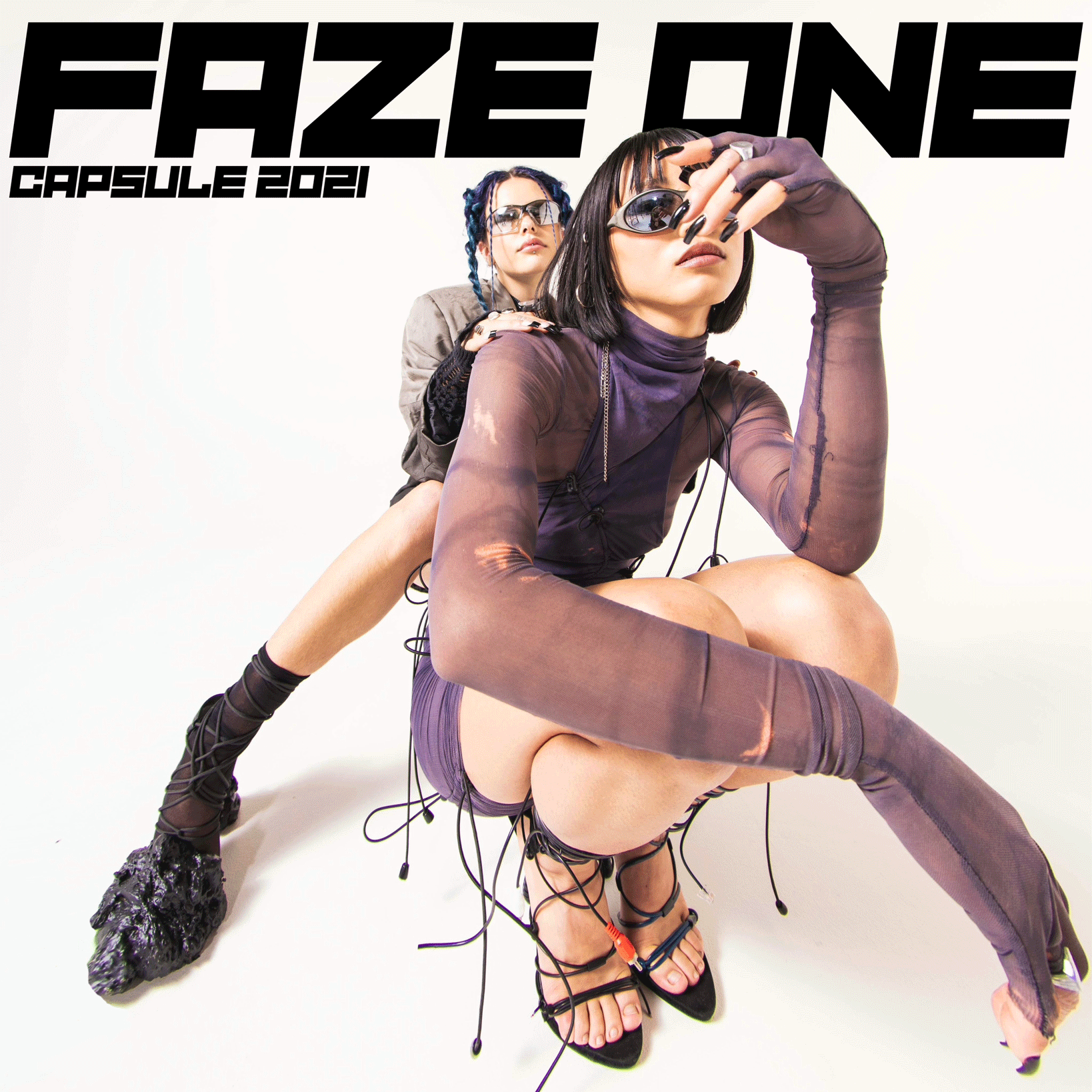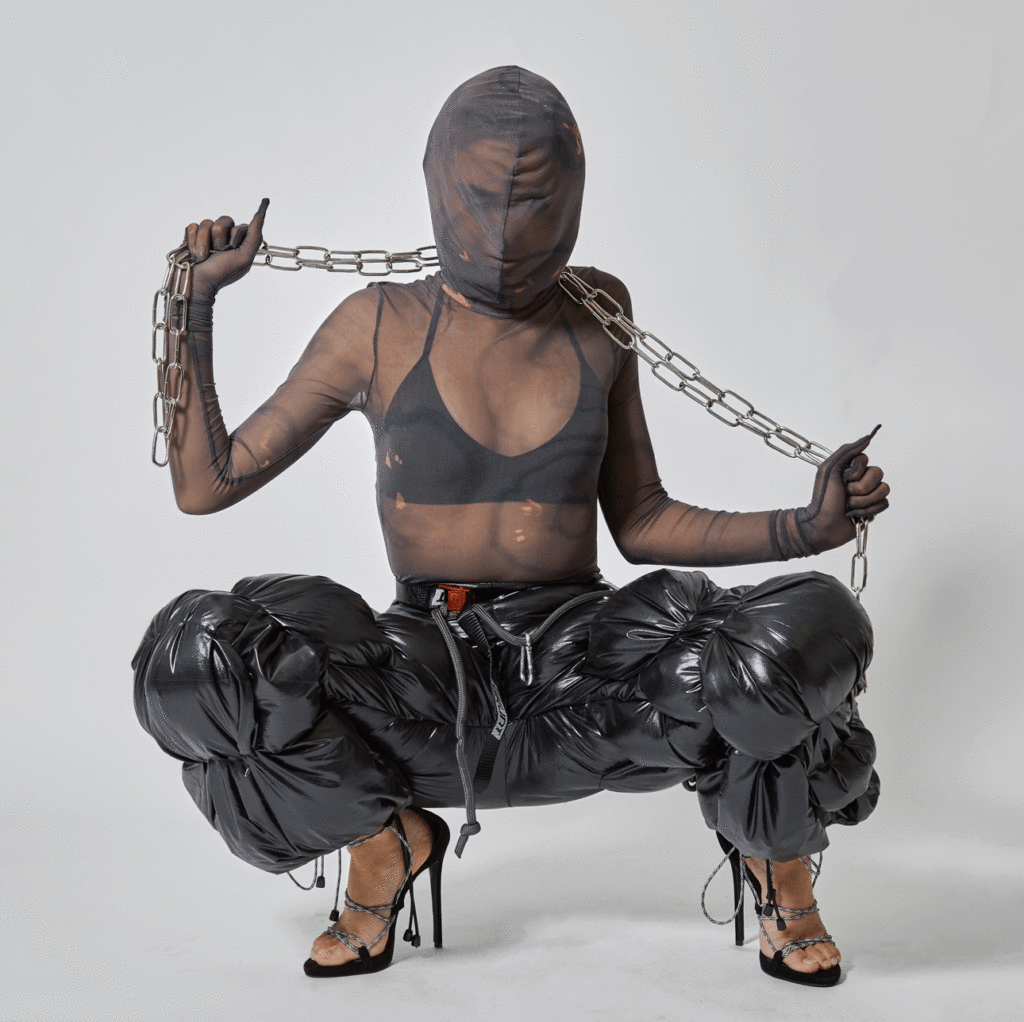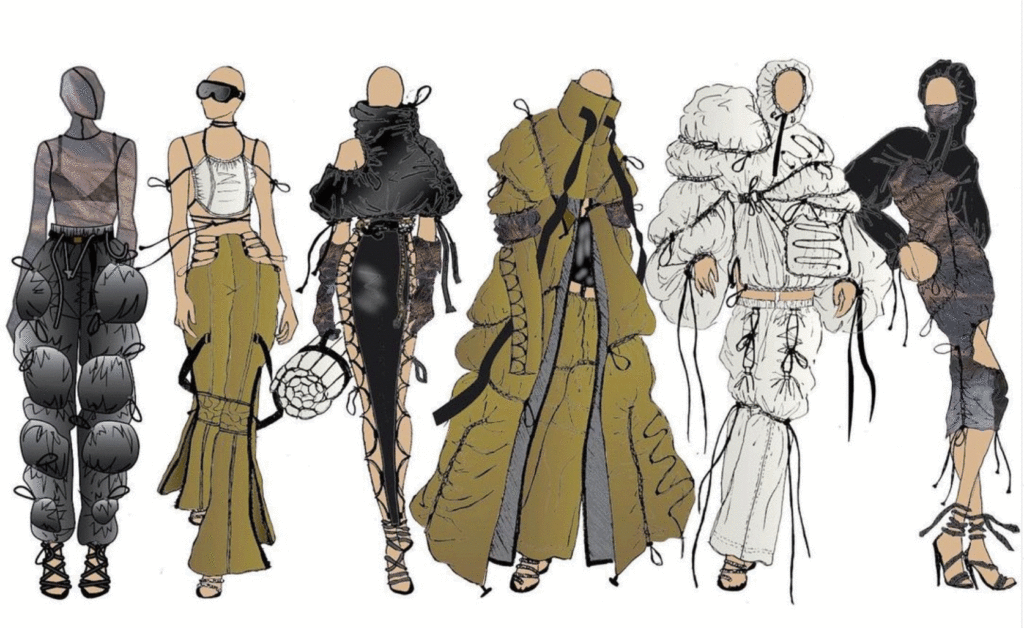Young designers today face the challenge of creating during a global pandemic, and the consequences of climate change in the 21st century. Though catastrophic global events show us a grim future for what lays ahead, designers, like Taelah Aitchison are finding their place among our dystopian present.

“I always knew I wanted to do fashion from when I was little. I always wanted to be a designer, it started from my grandma and learning how to make garments for dolls and toys. It hasn’t really been anything else for me.”
I caught up with Taelah on the second day of Melbourne’s 6th lockdown. She was working on a piece for UK drag queen Tayce while we spoke to each other over zoom. “I like to source all my stuff locally, so not having fabric stores open has made things a bit difficult”, she says as she works away “it’s definitely impacted me, but I kind of like lockdowns in the sense that I could really focus so not having other distractions or not having work on meant that I could work on my collection and not have to get out of that frame of mind”. She admits that in the beginning she lost motivation with the uncertainty of lockdowns; “but now it’s become the normal so I’ve kind of gotten over it. I’m happy to move on and can take my work digital. I can do so much with photoshoots and social media, there’s a lot of fun I can have with communicating my work digitally”.

The digital space offers much to fashion, for a cohort that graduated straight into a lockdown; online provides an opportunity to take their work global. Taelah graduated in 2019 with her Masters in fashion from The Masters Institute. Her graduate collection, titled ‘Faze One’, imagines a dystopian future where people are forced to wear reworked outdoors camping materials. She created tie-die knit layers along with sculptural puffers to reflect toxicity and mutation from industrial waste. In 2020 she produced her capsule collection where she focused on creating reworked garments. Straying away from traditional commercial pieces, Taelah prefers to push the boundaries on what she can produce from existing materials. She sees her pieces as sculptures, one of a kind that can’t be replicated in a fast fashion heavy world. “In Australia all you really see in fashion is H&M or Cotton On all making the same garments, everyone dressing the same.” Faze One has provided her and her customers with the space to break away from that and exist in garments that are truly unique.
Like most young designers, Taelah is balancing working on her own collection while having part time work. “It is good because I still get that experience of working for someone else while getting to develop my own line”. Her success in marketing Faze One through Instagram and highlights just how fashion is still able to thrive in pandemic conditions through online spaces. The fashion industry is at a new frontier with the oversaturation of low-quality fast fashion, pitched in the foreground of climate change and late-stage capitalism. Taelah’s work offers a unique insight into how fashion can still stay relevant and critique the world that we’ve entered. By offering sculptural pieces that focus on repurposing things that already exist; Faze One is an example of a way to reimagine what we’ve already made into something new.

By shedding the frivolity of frills and soft trims, Faze One provides an alternate look at clothing as a protective force from the environmental threats to come. Full sleeved tie-dye knits and lace up pants that can alter the size and fit of the garment. Stillettos held together with telephone wires puffer pants that would provide warmth in arctic winters. Taelah’s imagining of a dystopian future pull together elements of everyday glamour with grunge, shocking its audience into picturing what unconventional clothing could be.
When exploring the future of Faze One Taelah explains; “I really see my brand as a boutique business where I get to create one-of-a-kind pieces”, working away on her garment. “I don’t see myself going mass market, I love to see what I can do in small scale and rework things that already exist”.
Click here to see her Instagram page or alternatively click here to see her portfolio



